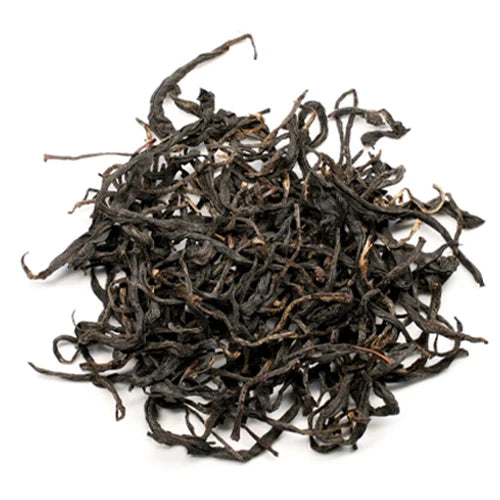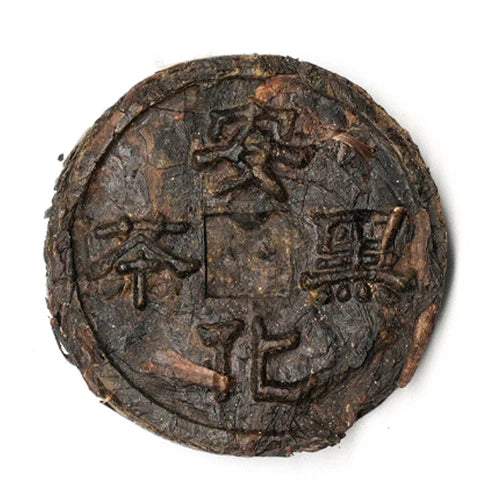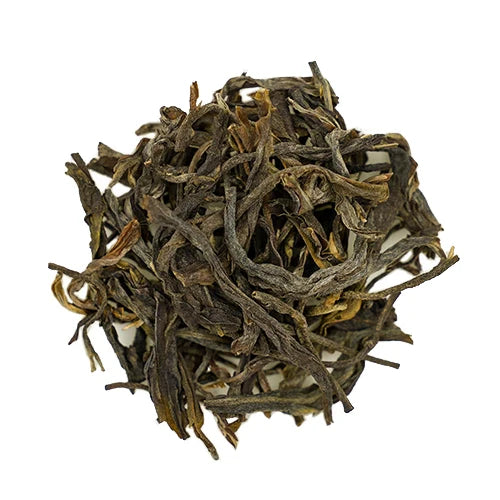
14 Ways to Brew Loose Leaf Tea Without an Infuser
Wondering how to brew loose leaf tea without an infuser? There are numerous inventive methods you can employ using everyday items found around the house. While the teapot is ideal for loose leaf tea, alternative solutions exist that make use of basic household tools. This article explores 14 diverse techniques for brewing loose leaf tea without an infuser. Let's dive in!
Curious about the methods for brewing loose leaf tea without an infuser? Fortunately, there are several options available. These methods vary in complexity and effectiveness, and we'll highlight the most practical ones. If a particular method requires supplies you don't have, simply move on to the next idea on the list!

Ways 1: Double Cup Technique
An advancement from the single cup method, the double cup technique requires access to two separate cups, offering a slight improvement in tea filtering compared to the single cup method, though it remains imperfect.
Method
Initial Brewing:
Begin by brewing the tea in cup number one, following a similar process to the single cup technique. Place around 5 grams of tea leaves at the bottom of cup number one and add warm water. Allow the leaves to infuse for the desired time.
Transfer Process:
Once the brewing is complete and the tea leaves have settled at the bottom of cup number one, proceed to transfer the infused liquid to cup number two. Pour the liquid slowly and steadily from cup one into cup two. The objective is to pour the top layer of tea without disturbing the settled leaves. This transfer helps to separate some of the leaves from the liquid, resulting in a somewhat clearer brew in cup number two.
Try this method with our Green Tea Sampler. >>>
The key to success with the double cup technique lies in a steady and controlled pour. By gently transferring the brewed tea from one cup to another, you can minimize the amount of loose leaves that make their way into the second cup. While this technique represents a marginal improvement over the single cup method, it still falls short of achieving a perfectly filtered tea infusion without the aid of an infuser.

Ways 2: Coffee Filter Technique
Utilizing a coffee filter for loose leaf tea brewing offers a feasible alternative, particularly when a pour-over device is available, though not essential for the process.
Method using a Pour-Over Coffee Maker
Preparation with Pour-Over Device:
If a pour-over coffee maker is accessible, it can be used for a slow-drip method to brew loose leaf green tea. Place the loose leaf tea into the coffee filter and set it up in the pour-over device. Slowly pour around 150ml of water over the tea leaves. The fine nature of the coffee filter allows for a slow extraction process, providing sufficient time to extract flavors from the leaves.
Method without a Pour-Over Device
Creating a Tea Bag with Coffee Filter Paper:
In the absence of a pour-over device, utilize the coffee filter paper to craft a makeshift tea bag. Place the desired amount of tea leaves in the center of the coffee filter paper. Fold and seal the paper tightly to create a teabag-like structure. Following the steps from earlier sections, immerse the teabag in a cup of warm water and allow it to steep for the required duration.
Tips:
Ensure the use of white coffee filter paper as opposed to brown, as the latter might impart unwanted flavors to the tea, affecting its taste profile.
Utilizing a coffee filter, either through a pour-over device or by creating a teabag-like structure, allows for the effective brewing of loose leaf tea without the need for specialized tea-making equipment.
Ways 3: Strainer Technique
The strainer technique stands out as a practical solution, requiring minimal equipment. If a tea strainer is available in your kitchen arsenal, it becomes an invaluable tool for preparing loose leaf tea. The key to brewing loose leaf tea sans infuser involves accommodating space for the leaves to expand during infusion while also having a means to filter them post-brew. Although a strainer might not rival the functionality of a teapot, it surpasses the limitations of a teabag. If you're looking for the best loose leaf tea, check our iTeaworld tea sampler, which includes popular Chinese loose leaf teas like dahongpao and tieguanyin.

Method using a Tea Strainer
Begin by placing approximately 5 grams of tea leaves into the tea strainer. Submerge the strainer into a cup of warm water. After the designated brewing duration, remove the strainer and allow it to rest on a dish or paper towel to facilitate drainage of the remaining infused liquid from the leaves.
Method using a General Kitchen Strainer
If a dedicated tea strainer isn’t available, a standard kitchen strainer can serve as a filtering apparatus. Brew the tea leaves in a separate container (as described in forthcoming methods) and then pour the infused liquid through the kitchen strainer into a cup, effectively separating the leaves from the tea.
Ways 4: Cup Technique
In scenarios where access to tools is limited, the cup technique emerges as a simplistic but less effective approach. With minimal requirements of tea leaves, water, and a cup, this method is the most straightforward among the alternatives discussed.
Method
Commence by placing roughly 5 grams of tea leaves at the bottom of the cup, followed by pouring in warm water. Allow the infusion to sit for about a minute. As the tea leaves absorb water, they'll become heavier, settling at the cup's base. To minimize the presence of leaves while drinking, carefully sip from the surface where fewer leaves accumulate.
However, it’s worth noting several drawbacks to this method. The tea tends to overbrew, affecting its taste, and occasional leaf bits may detract from the drinking experience. Despite these limitations, the cup technique offers a simple workaround for brewing loose leaf tea without relying on an infuser or other specialized tools mentioned in this guide.
Ways 5: Tea Bag Technique
Despite the convenience of teabags, they often compromise on the quality of brewed tea as they restrict the expansion of leaves, hindering the full release of flavors into the water. However, in desperate situations, crafting your own teabag using an empty one can serve as a makeshift solution.

Method
Preparation of the Teabag:
Begin by obtaining an empty teabag. Measure out approximately 5 grams of loose leaf tea and carefully fill the empty teabag with the tea leaves. Seal the teabag securely to prevent the leaves from spilling out. For travelers or those on the go, using empty silk teabags and filling them with loose leaf tea becomes a handy technique, ensuring a quality tea experience without risking fragile teaware during travels.
Shop our best loose leaf tea. >>>
Brewing Process:
Place the homemade teabag into a cup and add warm water. Allow the tea to steep for the recommended duration, ensuring the tea bag remains submerged. Once the brewing time is complete, remove the teabag from the cup.
For individuals anticipating limited access to teaware or specific brewing tools, preparing a few of these homemade teabags in advance can be beneficial. This method offers a quick and convenient way to enjoy loose leaf tea without specialized teaware, catering to situations where traditional brewing tools might not be readily available.
Crafting your own teabags allows for the portability of loose leaf tea without compromising on flavor, making it an adaptable solution for tea lovers on the move or in scenarios where traditional teaware might not be accessible.
Ways 6: Pot Technique
In situations where your teapot lacks a built-in or detachable strainer, improvisation using a sieve becomes essential to achieve a filtered tea infusion.

Method
Tea Brewing in the Pot:
Begin the brewing process in your teapot as usual. Add the desired quantity of tea leaves to the pot and pour in hot water. Allow the leaves to steep for the recommended duration to achieve the desired strength and flavor.
Filtering Process:
Once the brewing time is complete, prepare a cup for pouring. Position a sieve or strainer over the cup. As you pour the brewed tea from the pot into the cup, use the sieve to filter out the leaves. This method ensures that the tea is effectively strained, preventing any loose leaves from entering the cup while also halting the brewing process at the desired time.
Employing a sieve during the pouring process serves as an effective makeshift solution to strain the brewed tea, maintaining a leaf-free and well-infused cup of tea.
Ways 7: Slotted Spoon Technique
Similar to the fork method, the slotted spoon technique utilizes a broader utensil with more space for straining the brewed tea.
Method
Pour the brewed tea from the initial brewing cup into the drinking cup, but this time use a slotted spoon as a filter. Pour the tea through the slotted spoon, allowing it to sift through while keeping the leaves trapped. The slotted spoon's design offers improved straining capabilities compared to a fork, making it easier to master this technique.
Ways 8: French Press Technique
Utilizing a French press as an alternative to a teapot provides an effective solution for brewing loose leaf tea without the need for a separate infuser. The French press offers ample space for leaves to expand during infusion and facilitates easy filtering after brewing.

Method
Tea Preparation in the French Press:
Start by adding approximately 5 grams of loose leaf tea into the French press. If you prefer black tea, try our black tea sampler, which includes Chinese famous loose leaf black teas such as Yingde Black Tea, Yunnan Black Tea, Souchong Black Tea, and Wild Souchong Black Tea. Pour in 150ml of hot water over the tea leaves.
Plunging Process:
Place the plunger and top on the French press but refrain from pushing it down immediately. Allow the tea leaves to infuse in the water for about a minute without plunging.
Plunging Technique:
After the designated minute has passed, gently push the plunger down just until it reaches the level of the leaves, ensuring not to exert too much pressure. Pushing the plunger too forcefully can extract bitterness from the leaves and affect the taste of the brewed tea. This partial plunging helps partially stop the brewing process, preventing excessive bitterness.
Filtering and Serving:
Once the plunging is done, pour out the brewed tea from the French press into cups. The French press effectively filters out the leaves, ensuring a leaf-free cup of tea.
By employing a French press, you create an environment that allows loose leaf tea to steep adequately while also providing an efficient means of filtering the brewed tea.
Ways 9:Tin Foil Infuser Technique
Using tinfoil to create a makeshift teabag offers an innovative solution that maintains the teabag's shape during the brewing process.
Method
- Take a small sheet of aluminum foil and place the tea leaves in the center. Wrap the bottom of the tin foil to enclose the leaves, then roll it up tightly to create a teabag-like package.
- Create small holes at the bottom of the tin foil teabag using a knife or scissors. Place the teabag in warm water for brewing. The tinfoil maintains its shape during infusion, ensuring that the tea leaves remain enclosed within the teabag throughout the brewing process.

Ways 10: Sieving the Tea Technique
Having a sieve on hand simplifies the process of brewing loose leaf tea without a teapot. The key is to have a means to filter the leaves from the brewed tea, allowing flexibility in choosing any suitable container for the brewing process, such as a mug or a glass.
Method
Preparation in a Tea Mug:
Begin by placing approximately 5 grams of loose leaf tea into a tea mug. If you like oolong tea, consider our oolong tea sampler, which comprises Chinese famous loose leaf oolong teas such as Dahongpao Oolong tea, Tie Guanyin Oolong tea, Minnan Narcissus Oolong tea, and Fenghuang Dancong Oolong tea. Add 150ml of hot water to the mug, allowing the leaves adequate space to steep and release their flavors.
Brewing Duration:
Let the tea leaves infuse in the water for about 1 minute. This duration allows for a sufficient amount of time for the flavors to develop in the tea.
Sieving Process:
Once the brewing time is complete, place a sieve over a separate cup or glass. Pour the brewed tea from the mug through the sieve into the cup. The sieve effectively filters out the tea leaves, separating them from the brewed tea.
Utilizing a sieve enables the brewing of loose leaf oolong tea without the necessity of a teapot, showcasing adaptability by using common household items for filtering purposes.
Ways 11: Paper Towel Technique
A sequel to the homemade teabag method, the paper towel technique involves crafting makeshift teabags using a paper towel.
Method
Lay out a square of dry paper towel on a kitchen table. Place approximately 5 grams of loose leaf tea in the center of the paper towel square. Roll up the paper towel to encase the tea leaves, creating a homemade paper towel teabag.

Ways 12: Gaiwan Technique
The Gaiwan, a traditional lidded bowl, remains a revered choice among seasoned tea enthusiasts due to its simplicity and effectiveness. This tool requires no additional filter for brewing loose leaf tea.
Method
- Place approximately 5 grams of loose leaf tea directly into the Gaiwan and fill it with water. Leave enough space between the water level and the rim to allow for movement without spilling.
- Let the tea steep for the required duration. Once the brewing time is complete, position the lid atop the Gaiwan. To strain the tea, tilt the lid slightly to create a small gap between the lid and the bowl, allowing the brewed tea to be poured through this gap. The gap serves as a filter, preventing the leaves from passing through while allowing the tea to flow.
Ways 13: Fork Technique
When lacking a sieve, utilizing a common household item like a fork can serve as an impromptu filtering tool for brewing loose leaf tea.
Method
- Brew the tea leaves in a cup of water, following the same process as the cup technique.
- After the leaves have finished brewing, pour the infused liquid into a separate cup. Position the fork at the edge of the mug in such a way that the water flows through the tines of the fork. The fork acts as a makeshift filter, preventing the leaves from entering the second cup. While effective, this method might require some practice to perfect.

Way 14: Traditional Chinese Blowing Technique
The traditional Chinese blowing technique is a unique and ancient method of brewing loose leaf tea that involves allowing the tea leaves to float freely in the water within the cup and using controlled blowing to separate them while drinking.
Method
- Begin by placing the desired quantity of loose leaf tea directly into your cup of hot water. Allow the leaves to float freely in the water, infusing naturally without any physical agitation.
- As you come to drink the tea, engage in controlled blowing across the surface of the tea. This deliberate blowing action will gently move some of the leaves toward the bottom of the cup while causing those floating on the surface to shift away from your mouth.
This technique, originating from ancient Chinese tea culture, was more than just a brewing method; it was a meditative practice focused on mindfulness and breath awareness. It served as a way to bring attention to one's breath and promote a slower, more mindful tea-drinking experience.

































































